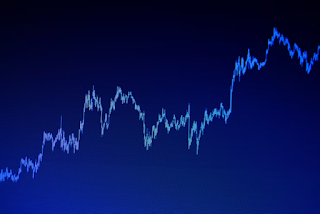Understanding High-Frequency Trading (HFT)
High-frequency trading (HFT) is a strategy that uses powerful computers to execute trades at incredibly high speeds, often in microseconds. It relies on algorithms to analyze multiple markets simultaneously, identifying small price differences and executing orders swiftly to capitalize on these opportunities. This approach hinges on the ability to process vast amounts of data quickly, enabling traders to react to market changes faster than human traders can. In today's financial markets, the speed and precision of HFT, facilitated by high-frequency trading signals, have become crucial for liquidity provision and price efficiency, shaping modern trading landscapes significantly.
Importance of Signals in Trading
Signals play a crucial role in trading by providing actionable insights based on market data. They help traders identify optimal entry and exit points, enhancing decision-making and profitability. Signals also aid in managing risks by alerting traders to potential market movements and opportunities, ensuring they stay informed and competitive in dynamic financial markets.
Evolution of High-Frequency Signals
Historical Perspective
High-frequency trading (HFT) emerged in the late 20th century, initially with simple strategies like arbitrage. It evolved rapidly due to advancements in computing power and connectivity, enabling trades in microseconds.
Technological Advancements
HFT benefited from faster processors, low-latency networks, and co-location services. These innovations enhanced trade execution speeds and data processing capabilities, making high-frequency signals more accurate and profitable in modern markets.
Benefits of High-Frequency Signals
Speed and Efficiency
High-frequency signals enable trades to be executed in milliseconds, leveraging rapid data processing and advanced algorithms. This speed reduces latency and ensures that trades are executed at optimal prices, minimizing slippage and maximizing profit potential.
Enhanced Decision Making
By processing vast amounts of data in real time, high-frequency signals provide traders with actionable insights promptly. This capability allows for quicker identification of market trends, opportunities, and risks, empowering traders to make informed decisions swiftly and effectively.
Challenges in Utilizing High-Frequency Signals
Market Volatility
High-frequency trading strategies can struggle during times of rapid market fluctuations. Sudden price swings can trigger unexpected losses or missed opportunities, challenging the effectiveness of algorithms designed for stable market conditions.
Regulatory Issues
The regulatory landscape governing high-frequency trading is complex and evolving. Compliance with rules on market manipulation, fair access, and data privacy adds operational overhead and legal risks, impacting the adoption and execution of high-frequency strategies.
Strategies for Effective Signal Utilization
Algorithmic Trading Models
Algorithmic trading models automate the process of executing trades based on predefined criteria and algorithms. These models use high-frequency signals to capitalize on market opportunities swiftly and efficiently, leveraging speed and accuracy to execute trades within milliseconds.
Risk Management Techniques
Effective risk management techniques are crucial in high-frequency trading to mitigate potential losses. Traders employ strategies such as stop-loss orders, position sizing based on volatility, and real-time monitoring of market conditions to control risk exposure and ensure sustainable trading performance.
The Role of Artificial Intelligence (AI)
Machine Learning Algorithms
AI-powered machine learning algorithms analyze vast datasets to identify patterns and predict market movements with precision. These algorithms adapt and improve over time, optimizing trading strategies by leveraging historical data and real-time information to make informed decisions swiftly.
Predictive Analytics
AI-driven predictive analytics utilize statistical models and machine learning techniques to forecast future market trends and risks. By processing large volumes of data, these tools provide traders with actionable insights, helping them anticipate market shifts and optimize trading strategies to capitalize on opportunities effectively.
Real-World Applications
Case Studies in Different Markets
Case studies in different markets showcase real-world applications of high-frequency signals, highlighting their effectiveness and impact across diverse financial environments.
Stock Market
In the Stock Market, high-frequency signals revolutionize trading by swiftly analyzing vast amounts of data, and executing orders in microseconds. This enhances liquidity and price discovery while mitigating risk. Traders utilize algorithms to capitalize on small price differentials across stocks, optimizing returns in volatile conditions.
Forex Market
In the Forex Market, high-frequency signals facilitate rapid currency trading based on real-time data. Algorithms execute trades at lightning speed, exploiting tiny price discrepancies across global exchanges. This efficiency reduces transaction costs and enhances liquidity, making it essential for participants aiming to capitalize on fleeting market opportunities.
Future Trends and Innovations
Quantum Computing
Quantum computing promises unprecedented processing power, potentially revolutionizing high-frequency trading by enhancing algorithmic complexity and speed beyond current capabilities.
Blockchain Technology
Blockchain offers decentralized and secure transaction mechanisms, ensuring transparency and reducing trading settlement times, thus transforming how financial assets are exchanged in high-frequency trading environments.
Ethical Considerations
Fairness and Transparency
In high-frequency trading (HFT), concerns arise about fairness in market access and transparency of trading practices. Algorithms executing trades at lightning speeds may raise questions about equal opportunity for all market participants and the visibility of trading activities, impacting investor trust and market integrity.
Impact on Market Stability
The rapid execution of trades based on high-frequency signals can contribute to market volatility, potentially amplifying price fluctuations. This impact on stability requires careful monitoring and regulation to mitigate systemic risks and ensure the smooth functioning of financial markets, balancing innovation with safeguarding market integrity and investor confidence.
Conclusion
In conclusion, the future of trading lies in harnessing high-frequency signals effectively. As technology advances, the integration of AI and sophisticated algorithms will continue to redefine professional trading signals. However, ethical considerations such as fairness, transparency, and market stability must remain central in shaping regulatory frameworks. By navigating these challenges thoughtfully, traders can capitalize on the potential of high-frequency signals while ensuring a resilient and equitable financial ecosystem.







.jpg)
No comments:
Post a Comment